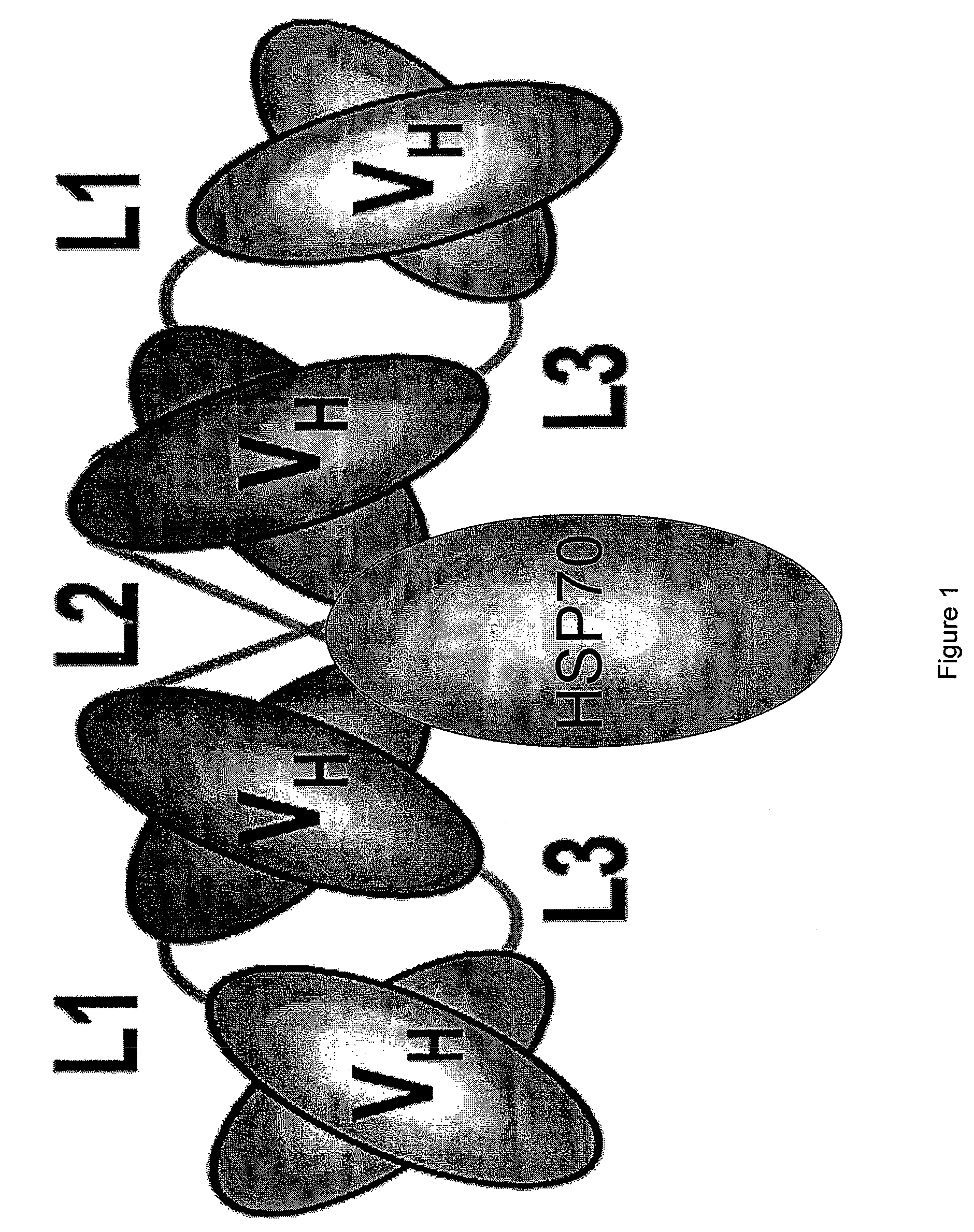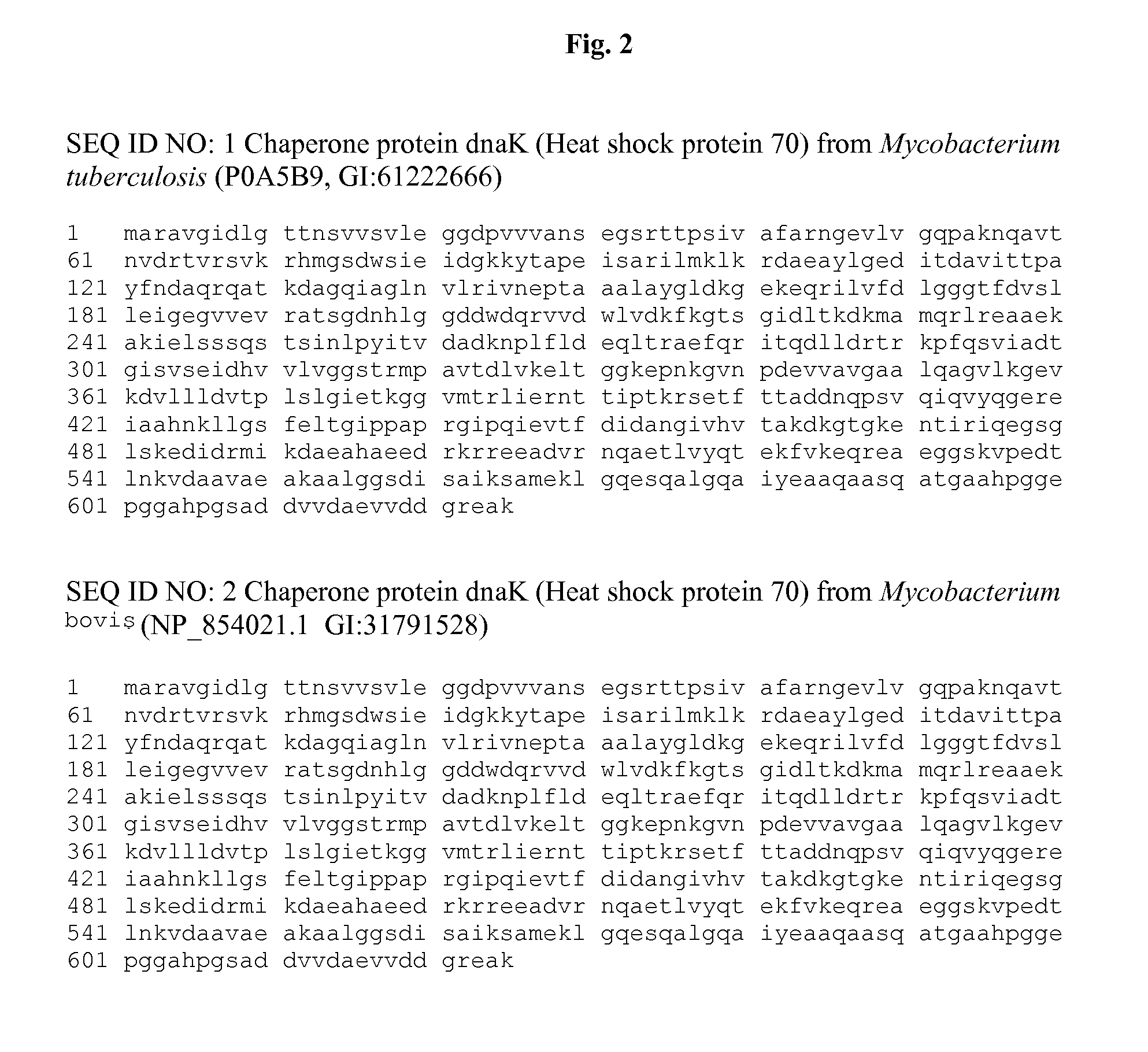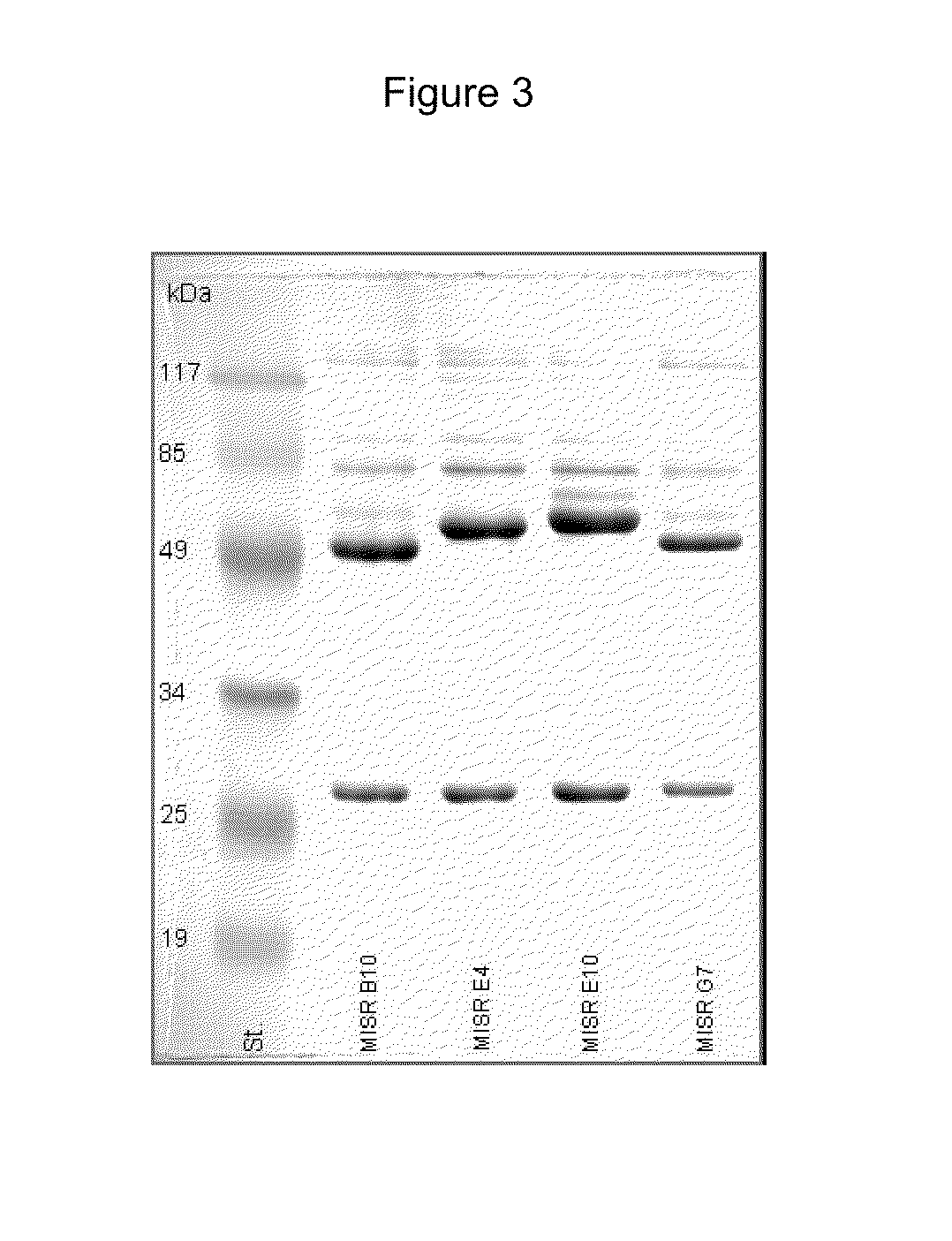Engineered antibody-stress protein fusions
a stress protein and protein technology, applied in the field of engineering antibody-stress protein fusion, can solve the problems of poor immunogenicity, high cost of culturing mammalian cells, and the inability of fc deficient mini-antibodies to interact with antigen-presenting cells, and achieve the effect of high affinity and inexpensive fusion to a stress protein
- Summary
- Abstract
- Description
- Claims
- Application Information
AI Technical Summary
Benefits of technology
Problems solved by technology
Method used
Image
Examples
example 1
Construction of a Mab-Hsp70 Conjugate and Immunization Using the Conjugate
[0179]A 14 amino acid long MISR2 peptide (SEQ ID NO 3: NANYSHLPPSGNRG) was chosen on the account of its stability, hydrophilicity and similarity with mouse MISR2. The peptide was conjugated with HSP70 using 25% glutaraldehyde. A Balb / c mouse was immunized twice with 2-weeks interval into foot pads at 100 μg of MISR peptide-HSP70 conjugate. The immune lymph node cells were fused with sp2 / 0 myeloma cells. The supernatant were screened by indirect ELISA using MISR peptide or MISR-HSP70 fusion protein or pure HSP70. The positives were cloned 2-4 times and propagated in mouse for ascites.
[0180]The antibodies were purified from ascitic fluids by double salt-precipitation using ammonium sulphate. The antibodies were tested in PAAG electrophoresis under denaturing condition (FIG. 3). The antibodies were tested in indirect ELISA for binding with MISR-HSP70 conjugate, MISR peptide or HSP70. The results are shown in FIG....
##ic example # 1
Prophetic Example #1
Tandab Comprising scFv and HSP70
[0181]FIG. 1 depicts an exemplary engineered antibody-stress protein fusion polypeptide comprising a tetravalent Tandab (engineered antibody) and HSP70 (stress protein). Tetravalent Tandabs may be prepared substantially as described in WO 99 / 57150, US20050089519 and Kipriyanov, et al., 1999, J. Mol. Biol. 293:41-56, all of which references are expressly incorporated herein by reference. Briefly, the construct encoding the single chain molecule comprising four antibody variable domains may additionally incorporate a stress protein gene, for example, HSP70. Alternatively, the single chain molecule comprising four antibody variable domains may be produced separately and then linked, e.g. covalently linked, to a stress protein such as HSP70.
##ic example # 2
Prophetic Example #2
Production of scFv in E. coli
[0182]E. coli strain GX6712 (F galk2 rspL cI857) and plasmid pGX8773 may be obtained from Genexcorp (Gaithersburg, Md.). The expression vector pGX8773 successfully encodes a single chain antibody construct, fused to the OmpA signal sequence, and contains an interdomain linker. The linker is the flexible linker peptide of Trichoderma reesi. Expression vector pLY3 encodes the scFV VH and VL genes fused to the OmpA signal sequence, with the VH and VL domains tethered by the linker. Expression vectors utilize a hybrid OL / PR lamba promoter with protein expression initiated by a temperature shift from 30° C. to 42° C. in E. coli GX6712. (Mallender & Voss, J. Biol. Chem (1994) 269:199-206)
[0183]The scFv may be expressed and then tethered to HSP70 separately, or the scFv may be incorporated into a fusion polypeptide, as described throughout the specification and in Example 3 below.
PUM
| Property | Measurement | Unit |
|---|---|---|
| concentration | aaaaa | aaaaa |
| temperature | aaaaa | aaaaa |
| temperature | aaaaa | aaaaa |
Abstract
Description
Claims
Application Information
 Login to View More
Login to View More - R&D
- Intellectual Property
- Life Sciences
- Materials
- Tech Scout
- Unparalleled Data Quality
- Higher Quality Content
- 60% Fewer Hallucinations
Browse by: Latest US Patents, China's latest patents, Technical Efficacy Thesaurus, Application Domain, Technology Topic, Popular Technical Reports.
© 2025 PatSnap. All rights reserved.Legal|Privacy policy|Modern Slavery Act Transparency Statement|Sitemap|About US| Contact US: help@patsnap.com



